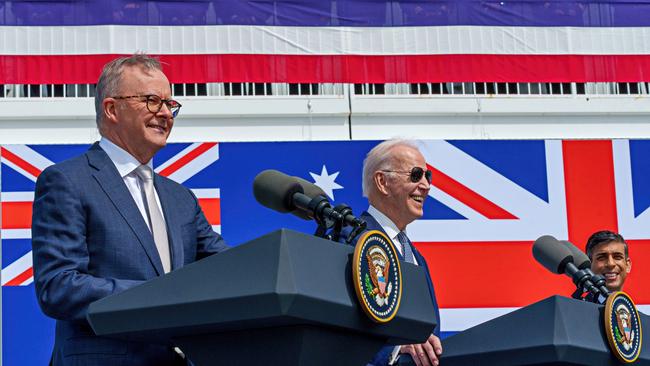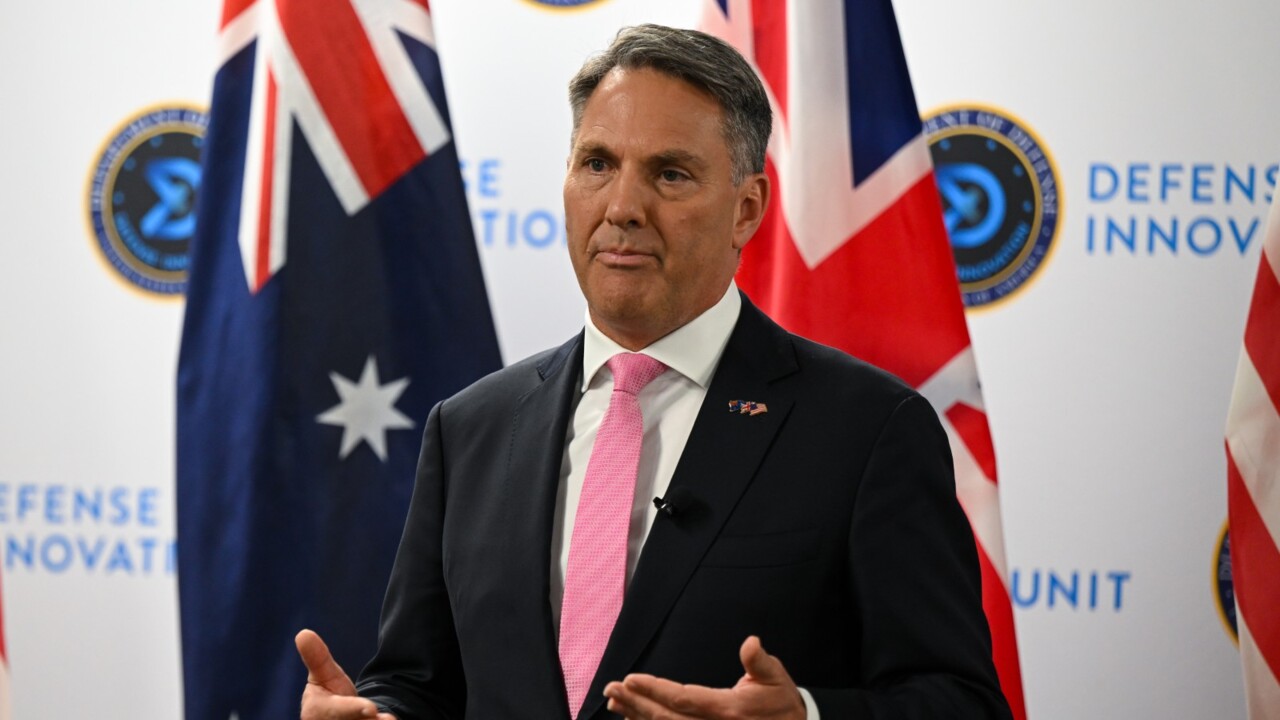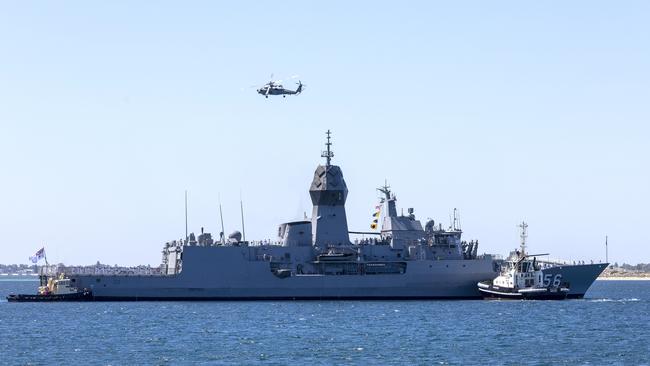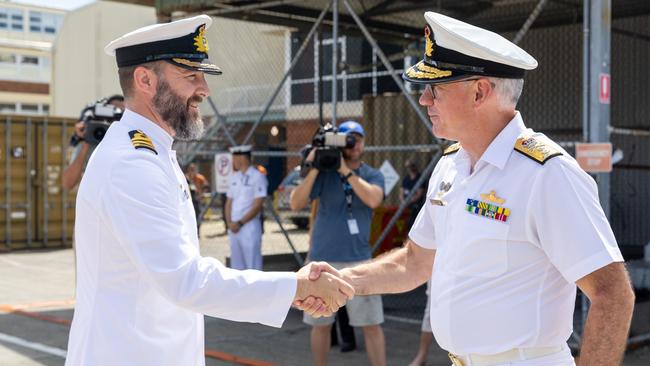Navy ready for new mission after AUKUS bill passes
The navy has declared it is ready to send a warship on a dangerous Middle East mission, just hours after the US congress gave the green light to sell nuclear-powered submarines to Australia.

The Australian navy has declared it is ready to send a warship on a dangerous Middle East mission if the government agrees to an American request, just hours after the US congress gave the green light to sell nuclear-powered submarines to Australia.
Rear Admiral Christopher Smith said the navy was “ready to support any requirements that the government will ask of us”, despite concerns over the availability of the service’s workhorse Anzac-class frigates for the proposed Red Sea deployment.
Anthony Albanese hailed the passage of the AUKUS-enabling bill on Friday morning (AEDT), and revealed he personally spoke to more than 100 members of congress to help get the bill across the line. “This is an extraordinary achievement. And I pay tribute to all those who’ve worked hard to lobby members of congress and Senate to achieve this,” the Prime Minister said.

Defence Minister Richard Marles said the passage of the bill was a “colossal” milestone for the AUKUS partnership. “We are on the precipice of historic reform that will transform our ability to effectively deter, innovate and operate together,” he said.
The US legislation allows the sale of three Virginia-class nuclear submarines to Australia, authorises maintenance work on US submarines in Australia, and enables Australian workers to be trained in US shipyards.
It exempts Australia and the UK from US export controls on the transfer of sensitive military technology, and allows a direct Australian investment of $4.5bn into US submarine-building capabilities. The AUKUS partnership will require an unprecedented industrial uplift by Australia, including the training of more than 20,000 skilled workers and a more than doubling of the navy’s submarine personnel.

But it comes amid dire workforce shortages that have taken one Anzac frigate out of the water indefinitely, and left sufficient crew to put only three of the remaining eight frigates to sea at once, sources said.
The crew shortages will factor in the government’s assessment of a request by the US-led Combined Maritime Force in Bahrain – revealed by The Australian this week – to join an expanded multinational force to protect commercial shipping from attacks by Iran-backed Houthi rebels in Yemen.
Mr Marles has refused to give an early answer to the US Navy, saying Australia’s focus is on “our immediate region”, and the government will “work through with the Americans about how we can best contribute”.
Rear Admiral Smith said at a ceremony welcoming home four ships from operations in the Pacific, including Anzac frigate HMAS Toowoomba and air-warfare destroyer HMAS Brisbane, that the navy was prepared to deploy on the government’s orders.
“These are some of the most powerful warships in the world, they are well trained crews, they are well maintained and they are routinely in the region and active, so we are ready to support any requirements that the government will ask of us,” he said.

There has been a growing number of missile and drone attacks on ships in the Red Sea, including a Norwegian tanker this week, as Houthi fighters step up their harassment of the sea lane in protest against Israel’s war against Hamas in Gaza.
Australia is the only AUKUS member so far not to send a ship to help protect shipping in the Red Sea, after Britain announced it would send a destroyer to support the multinational naval presence.
The British vessel, HMS Diamond, will join a French frigate and two US destroyers. The US ships have shot down drones and missiles fired by Houthi rebels at commercial ships.
The 3000-plus page AUKUS-enabling bill gives a future US president the right to veto the submarine sale if the transfer is deemed to degrade the US Navy’s capabilities or undermine its national security interests.
But Democrat congressman Joe Courtney played down the prospect of the deal falling through, saying the US Navy, which any future president was likely to turn to for advice on the deal, was strongly behind the transfer.
Australia is scheduled to receive two in-service Virginia-class submarines and one off the production line under the $368bn AUKUS plan, and will have the option to seek congressional approval for the purchase of up to two more.







To join the conversation, please log in. Don't have an account? Register
Join the conversation, you are commenting as Logout